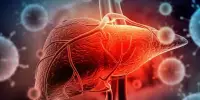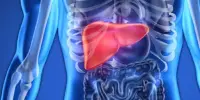Repurposing existing medications for new therapeutic objectives can be an exciting advancement in medicine. Cardiac arrhythmias are a type of heart rhythm disease that can range from moderate to life-threatening, and effective therapies are critical for improving patient outcomes.
Researchers developed a new reporting technique to track CaMKII activity while testing the impact of over 5,000 FDA-approved medicines on human cells expressing the enzyme. The screen discovered five previously undiscovered CaMKII inhibitors; the most successful was ruxolitinib, which is used to treat malignancies of the blood and bone marrow, as well as skin diseases such as atopic dermatitis and vitiligo.
Ruxolitinib, a drug that is already approved by the U.S. Food and Drug Administration (FDA) for treating certain cancers and skin conditions, is effective at inhibiting CaMKII, a protein kinase linked to cardiac arrhythmias.
Researchers from Johns Hopkins University and the University of Chicago developed a new reporting technique to monitor CaMKII activity while screening the effects of nearly 5,000 FDA-approved drugs on human cells that expressed the enzyme in a new study published in Science Translational Medicine. The screen discovered five previously undiscovered CaMKII inhibitors; the most successful was ruxolitinib, which is used to treat malignancies of the blood and bone marrow, as well as skin diseases such as atopic dermatitis and vitiligo.
Finding an FDA-approved drug means that millions of people have been taking CaMKII inhibitors, and in the case of ruxolitinib, there are no reported major problems with the brain.
Mark Anderson
CaMKII, or Calcium and calmodulin-dependent protein kinase II, is essential in cardiomyocytes, or heart muscle cells, where it regulates calcium levels. CaMKII activation aids in fast changes in heart activity, such as beginning a fight-or-flight response in the body. Overactivation can result in reduced cardiac function and cell death, which can lead to negative heart health consequences such as arrhythmia.
CaMKII is arguably best known for its role in the brain, where it is thought to play important roles in learning and memory. This has hampered the development of CaMKII inhibitors for the treatment of arrythmia, for concern of affecting cognitive function.
“Finding an FDA-approved drug means that millions of people have been taking CaMKII inhibitors, and in the case of ruxolitinib, there are no reported major problems with the brain,” said Mark Anderson, MD, PhD, a senior author of the paper and Dean of the Biological Sciences Division and Pritzker School of Medicine, Executive Vice President for Medical Affairs, and Paul and Allene Russell Professor at the University of Chicago. “This should give pharmaceutical and biotech companies confidence that they can carry out the development of a CaMKII inhibitor program, because the biggest hurdle appears to be surmountable.”

Anderson’s study started in his lab at Johns Hopkins University, where he was previously the William Osler Professor and Director of the Department of Medicine. Oscar Reyes Gaido, the study’s first author and an MD-PhD student in the lab, created a new technique for measuring CaMKII activity in living cells. He began with a protein known as green fluorescent protein (GFP), which was produced from jellyfish and produces green light. He then modified the GFP tag to detect CaMKII activation, creating CaMKAR (CaMKII Activity Reporter). When this reporter was introduced into human heart cells, it lit up bright green anytime CaMKII was activated, allowing researchers to track enzyme activity.
“This biosensor will be very useful for studying how CaMKII activity changes in both healthy and pathological contexts. Existing methods can measure CaMKII activity, but they lack the versatility and resolution to track in real time and with high sensitivity,” Reyes Gaido said. “This has been a real obstacle for studying enzyme biology in general, so this gives the field an important new tool.”
The researchers used this technology to conduct a drug repurposing screen, testing the effects of 4,475 authorized drugs on cultured human cardiomyocytes. This study discovered five new CaMKII inhibitors: ruxolitinib, baricitinib, silmitasertib, crenolanib, and abemaciclib. In cell and mouse models of CaMKII-driven arrhythmias, ruxolitinib was the most effective in inhibiting CaMKII activity.
A 10-minute administration of the medicine was sufficient to prevent catecholaminergic polymorphic ventricular tachycardia (CPVT), a hereditary cause of pediatric cardiac arrest, as well as to rescue atrial fibrillation, the most prevalent clinical arrhythmia. Importantly, when evaluated with memory and learning activities, the mice treated with ruxolitinib showed no deleterious cognitive consequences.
Anderson believes that future medications based on ruxolitinib could be utilized to treat a variety of heart diseases. One possibility is what he referred to as the “pill in a pocket” scenario. People in the early stages of atrial fibrillation could take the medicine on an as-needed basis. Patients with CPVT are frequently resistant to current treatments, therefore a ruxolitinib-based therapy could provide an additional choice. Finally, there is evidence that blocking CaMKII during a heart attack can prevent heart muscle death, so emergency responders may be able to use such a medicine as standard practice.















